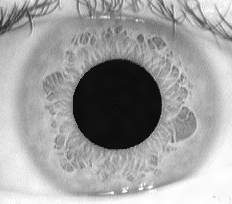The research team headed by Prof. TAN Tieniu of Institute of Automation, Chinese Academy of Sciences (CASIA) ranked first by a margin of 41.3% in the Noisy Iris Challenge Evaluation-Part II (NICE.II) which closed on September 6, 2010.
NICE.II was the complementary part of its antecessor NICE.I, an iris segmentation contest held in 2008, in which CASIA also took the championship. It was an iris recognition contest that evaluated the tasks of comparing and computing the dissimilarity between segmented noisy iris images for biometric purposes. The main goalof NICE.II was to evaluate the robustness to noise of iris encoding and matching methods, toward iris recognition systems that operate in less constrained imaging conditions, eventually covertly.
Co-held by Elsevier and University of Beira Interior of Portugal, NICE has distinguished itself by enabling a fair comparison between encoding and matching proposals as well as the effective evaluation of the algorithms robustness. NICE.II received 41 participants from 25 different countries and regions.
Iris recognition is a potentially valuable biometric (a characteristic such as fingerprints that can be used to identify a person). It has the advantages of uniqueness, stableness, anti-spoof, noninvasiveness and efficiency, so it is widely applied in e-passport, banking, forensics, welfare, Internet and assess control. However, how to improve the convenience of iris image acquisition and robustness of iris recognition algorithm is still the challenging and unsolved problem in this field. The winning algorithm TAN’s team submitted to NICE.IIcould achieve efficient and robust recognition of noisy iris images in complex circumstances. Their approach is to be published in a special issue of the Pattern Recognition Letters Journal in 2011.
With the support of National Natural Science Foundation of China, the National Hi-Tech R&D Program (the 863 Program), and the National Key Fundamental Research Program (the 973 Program), TAN’s team has developed an advanced iris recognition system that is able to identify subjects at a distance with a user-friendly interface, and has established its world reputation in this field as not only a research team but also a promoter of technology transfer.


